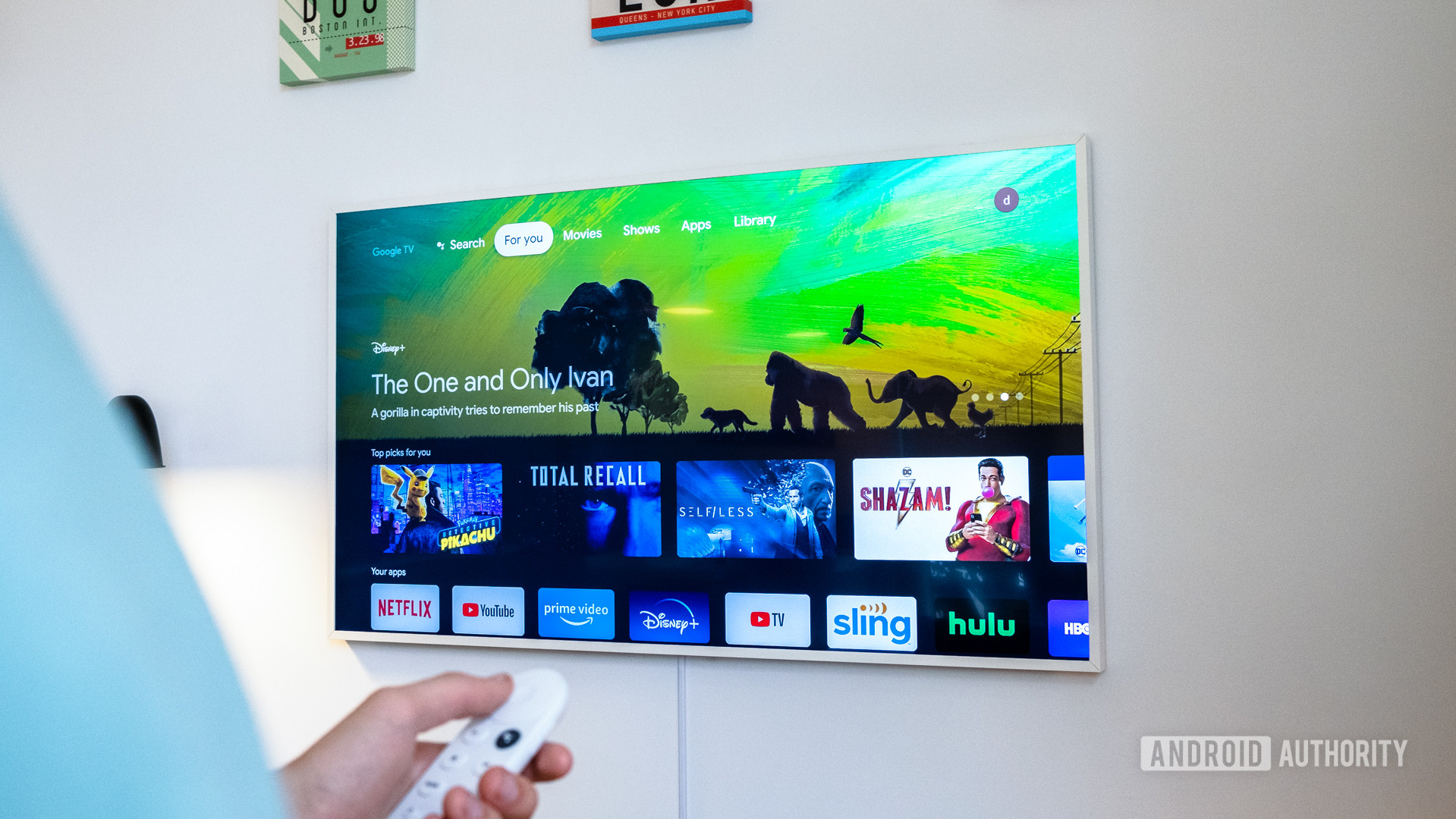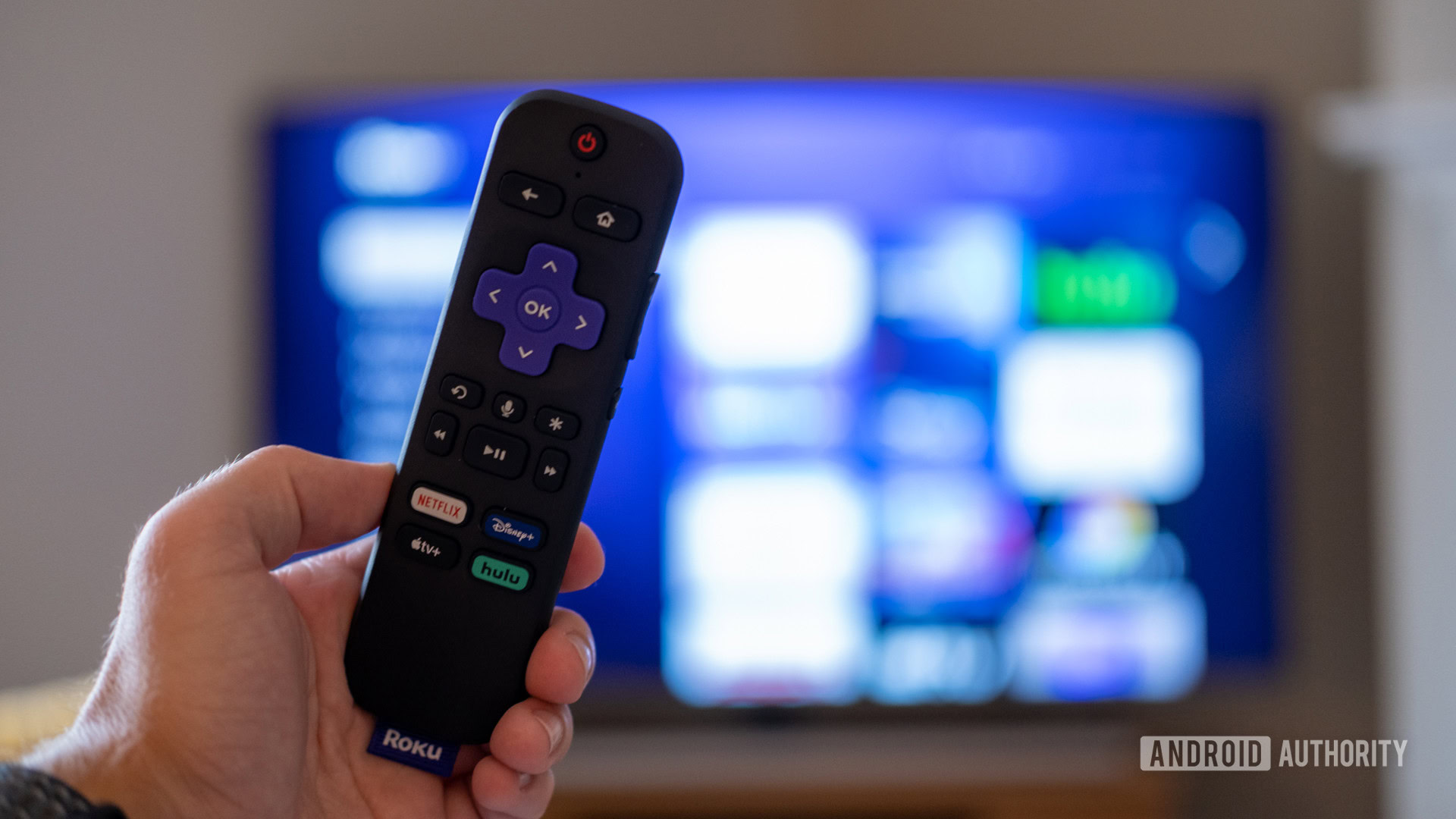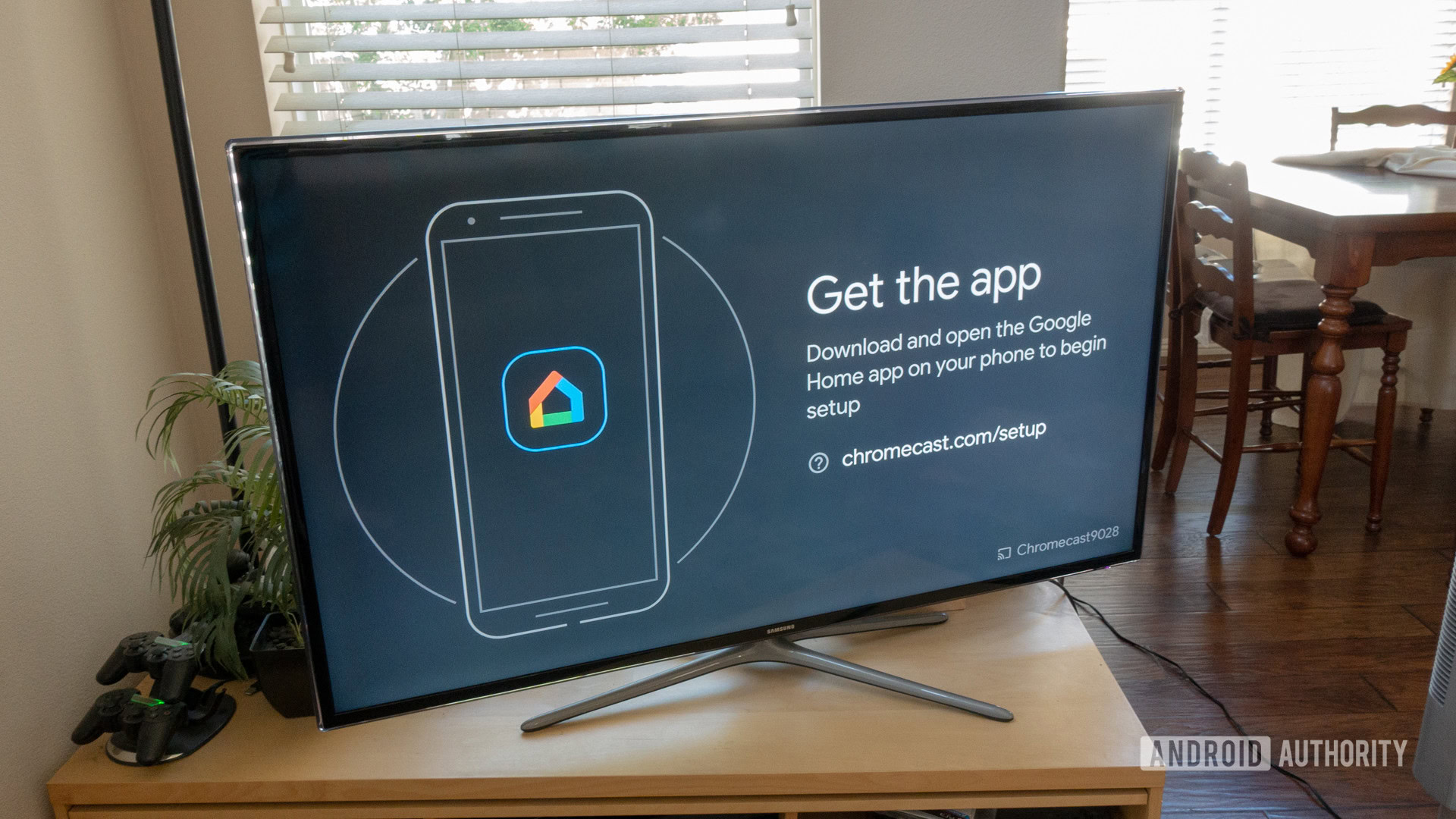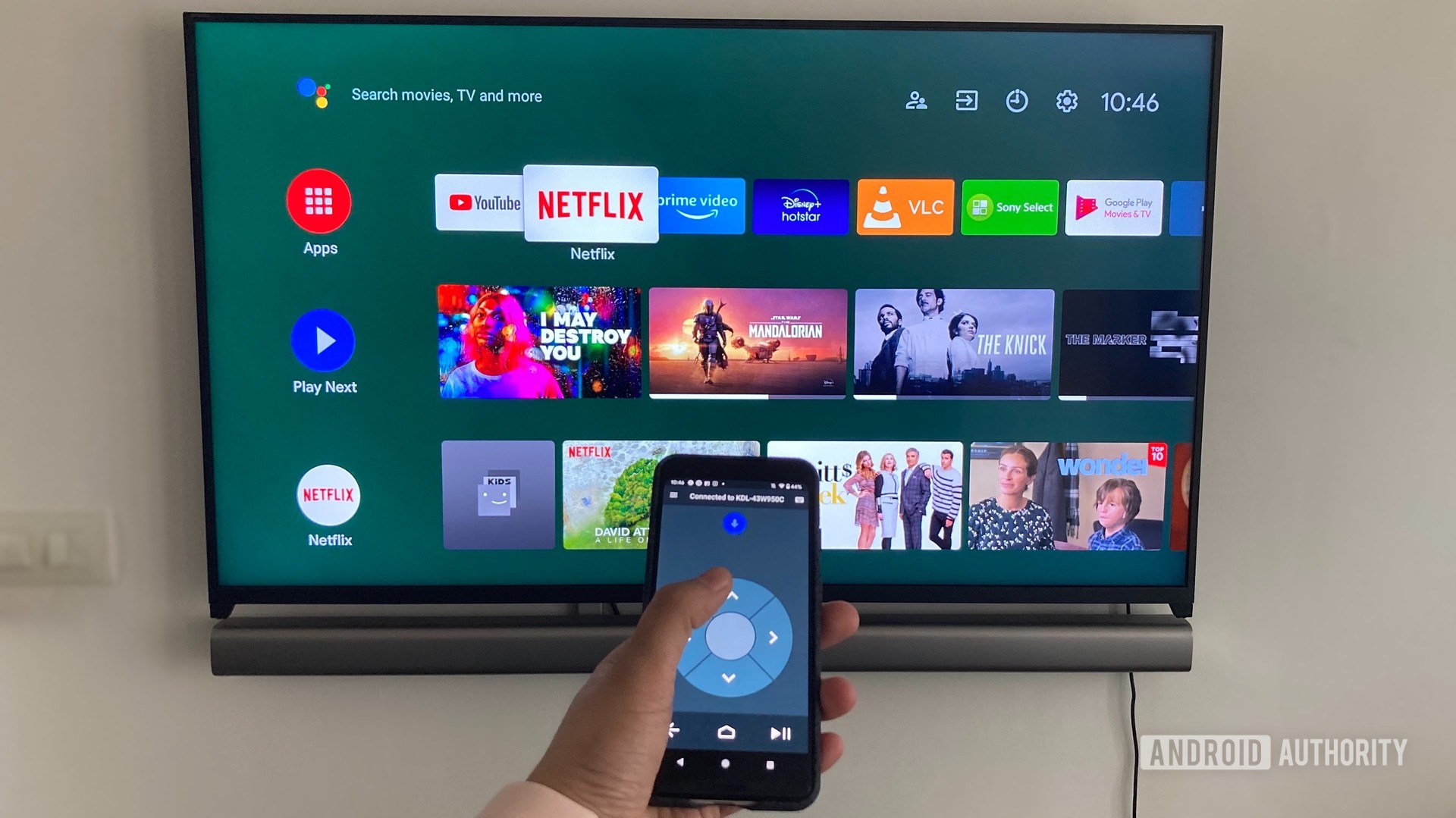Affiliate links on Android Authority may earn us a commission. Learn more.
Do you need a streaming device if you have a smart TV? Absolutely, here's why.
Published onMay 8, 2023

Smart TVs are de facto in 2023. These days, it’s legitimately difficult to find a consumer model with a barebones interface. Even if a product doesn’t use a shared platform like Roku or Google TV, it probably has a proprietary one, like LG’s webOS.
It can be tempting to choose a TV based primarily on its smart UI. You’re spending less than you would by adding a separate streaming device, while simplifying the installation process to boot — no need for extra power, network, or HDMI cables. You might also get instant integration with your phone or smart home platform of choice, and a good fallback if you do end up buying a stick or set-top.
All of these points are valid, but in reality, they often hold true for just a few years. The wiser move is to plan for a separate streaming device from the get-go, whether immediately or a few years down the road.
Do you use a streaming device or your smart TV apps?
Obsolescence looms large for smart TVs

Raw processing power isn’t as important for TVs as it is for smartphones or PCs, but you still don’t want to be suffering through laggy UI animations or long load times when jumping between apps and shows. The brute fact is that the processors in smart TVs can never be upgraded, whereas a separate streamer can be swapped out for a fraction of a TV’s price tag, bringing you newer and faster chips.
Native TV hardware inevitably becomes slower over time, whether because features are added to the UI, or it’s forced to handle more demanding audio and video. Roku, for example, has introduced more visual flair to its UI over the years, including themes and animated screensavers. Older Roku TVs can handle it with occasional hitching. That alone wouldn’t be a problem, but the same TVs sometimes lurch when buffering data or loading video previews for apps like Netflix. If they can even handle 4K, it’s not necessarily a great experience. Aging is of course an issue with separate streaming devices as well, but the price delta means the cost of upgrading is far less painful than replacing your entire TV set.
On a long enough timeline, it’s virtually guaranteed that a TV will lose some smart features outright.
On a long enough timeline, it’s virtually guaranteed that a TV will lose some smart features outright. In 2011, I bought a relatively state-of-the-art Sharp Aquos model with custom apps for services like Netflix. While the TV still works — and actually looks pretty damn good, even if it’s limited to 1080p SDR — that Netflix app has been out of commission for years, and never ran well in the first place.
By relying on a TV’s internal specs, you’re also locking wireless tech inside an expensive cage. A set with 802.11ac (Wi-Fi 5) may be alright for now, but as things like 4K and cloud gaming become universal you’re probably going to need Wi-Fi 6, and eventually Wi-Fi 6E or Wi-Fi 7. Audio standards have been evolving too, enabling things like integrated voice assistants and high-fidelity Bluetooth.
To repeat, long-term features and app compatibility aren’t guaranteed with a streaming accessory either. But your wallet won’t feel the hurt buying a new Roku or Chromecast add-on over a three- or four-figure TV.
Software is important, and TVs can’t always keep up

Software is as crucial as hardware in avoiding obsolescence. Standalone streamers are more liable to get feature and security updates than a TV with a custom OS, for the simple reason that TV makers don’t have the same focus you see at companies like Roku or Google. For the latter group software is often a core component of their business, generating ad revenue, and/or sales from media rentals and downloads. TV makers are naturally focused on selling hardware, so they tend not to have the resources for frequent updates, or much of anything to gain from them. It’s one reason they turn to third-party platforms in the first place.
Software is as crucial as hardware in avoiding obsolescence.
Choosing a separate streamer also wins you the freedom to switch between app and smart home ecosystems. You might enjoy Google TV, for example, but find yourself tempted by the games on an Apple TV 4K. Moving in a different direction, an Apple fan might find the company’s smart home tech limited and decide to go all-in on Alexa, including a Fire TV Cube.
Any TV with a proprietary (brand-exclusive) OS can severely hinder your app experience. While you can usually access major services like Spotify and Netflix, niche options may be absent, and you’ll likely miss out on many non-media apps. Even when a TV does have the same apps as other platforms, they may not be up to feature parity. Companies always concentrate development around their biggest userbases.
Then there’s the issue of format support. While there are hard limits imposed by your TV’s specs, sticks and set-tops can still sometimes introduce support for newer standards. TVs that could only handle the x264 codec, for instance, might suddenly be able to stream HEVC/H.265. That offers superior bandwidth efficiency, especially when it comes to watching in 4K HDR.
Smart TV vs streaming devices: What should I do when buying a new TV?

When you’re shopping, focus on size, image quality, and available ports. Ignore a TV’s native UI if it can win you a better deal. Cinephiles should insist on a TV with 4K resolution, two or more HDMI 2.1 ports, an OLED or Mini-LED panel, and support for Dolby Atmos and Dolby Vision. These are all relatively common — yet you can sometimes be faced with a subpar native OS if you’re hunting for the best specs.
Superior display tech will always hold value far longer than most built-in smart functions, since a TV is really just a window into your media and games. Accordingly, the best streaming device can sometimes be your phone — if your TV has Google Cast support built in, it means you’ve got the freshest possible app updates, and access to tons of services with a few quick taps.